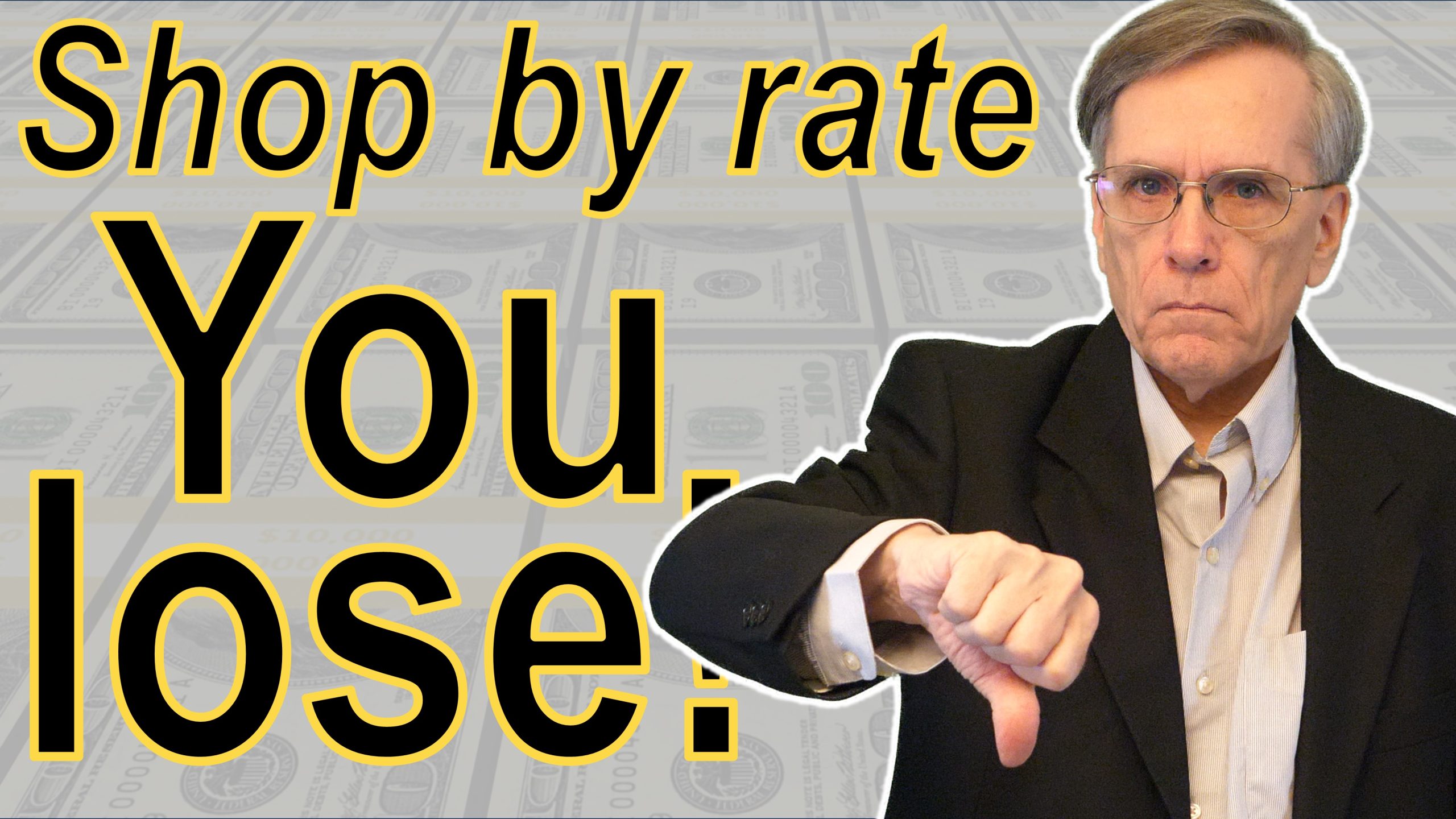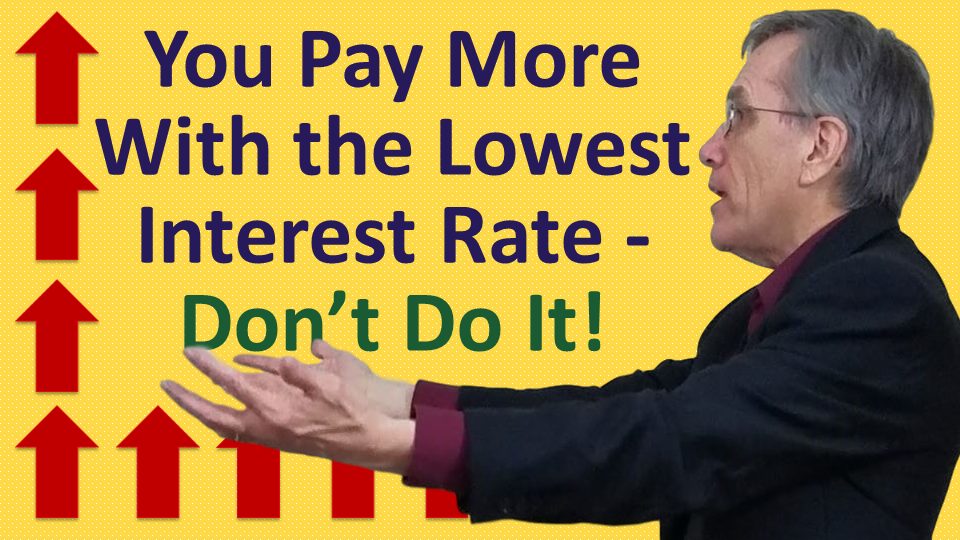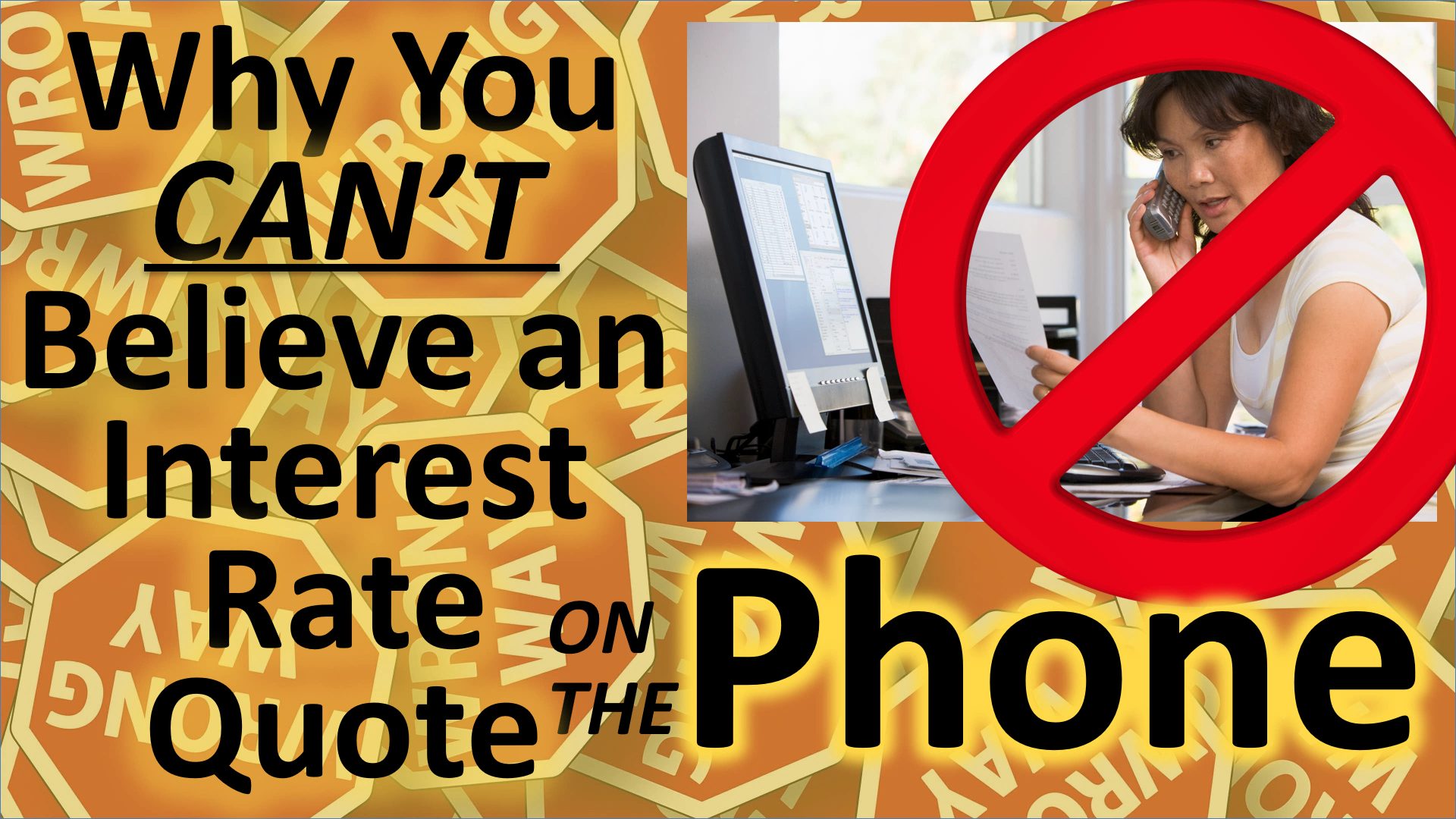Trying to find the lowest interest rate is NOT how to choose a mortgage! You…
What Is Your Interest Rate?
Understand the different interest rates
Interest rate is the primary factor most people look at when deciding on a loan.
Yet, as I explain in my Loan Payment Freedom Secrets seminar, focusing on the interest rate can blind you to more important factors about the financing.
But even when you do consider the interest rate, what is your real “rate,” anyway?
It’s not just the “rate” that’s quoted by the lender.
Let’s look at this a little more closely. You want to consider the full implications of every “rate.”
Interest accrual rate.
This is the “rate” that most people are familiar with. It is stated as an annual rate.
To actually pay that rate in total interest, you need to pay this loan off completely in one year.
Therefore, on a $100,000 loan at a 6% interest rate, you would pay $6,000 interest in one year ($100,000 x .06). (As a slight variation on this, an amortized loan such as a mortgage is calculated monthly on the month-end balance.)
Annual percentage rate (APR).
The government mandates the APR be reported to you whenever the interest accrual rate is quoted.
The intent is to take into account some of the fixed costs of obtaining the loan, thereby supposedly allowing you to compare two loans side by side, “apples-to-apples.” However, it is not as foolproof as originally intended. I calculated the APR on this same $100,000 loan at about 6.259%. It could be more or less depending on the closing costs.
| Comparing the Rates | ||
|---|---|---|
| Making regular payments on your mortgage | Making double payments on your mortgage | |
| Interest accrual rate | - 6.0% | - 6.0% |
| Annual percentage rate (estimated)* | - 6.259% | - 6.667% |
| First payment rate | - 83.4% | - 41.7% |
| Total interest rate | - 115.8% | - 29.7% |
| Investment interest rate | - 115.8% | + 40.9% |
| Numbers are based on a $100,000 loan at a note rate of 6.0% amortized over 30 years. Note that negative rates mean that you are paying that rate, positive rates mean that you are receiving that rate. | ||
| *This is another example of how the APR can be misleading. As the time to pay off the loan decreases, the APR increases with all other factors remaining constant. This is because the closing costs are spread out over a shorter period of time. Nevertheless, event though the APR increases for a shorter payoff time, you are still better off reducing the total payoff time on your mortgage. | ||
First payment rate.
You probably know that your first payment on a mortgage loan is mostly interest and very little goes to principal.
On this same $100,000 loan, the monthly payment is $599.55. The interest portion of this payment is $500.00.
This means 83.4% of your first payment goes to interest, with the remainder to principal ($500.00 / $599.55).
Total interest rate.
If you pay on that same loan for 30 years, you will pay $115,838.19 interest on the $100,000 you borrowed.
This is like a 115.8% interest rate ($115,838.19 / $100,000).
Investment interest rate.
For example, if you pay this same loan off quickly by doubling your required payment, you could pay it off in about 9 years instead of the normal 30 years for a total interest cost of $29,714.37.
If you then take that same double mortgage payment and invest it every month into a relatively safe investment at a 6% rate of return, you would end up with about $638,000 after 30 years (the same time you would have normally paid off your mortgage).
This means that instead of having paid out $115,800 over 30 years, you will have gained about $608,300 ($638,000 from the investment less $29,700 interest paid on the mortgage). By paying $431,600 over those 30 years you would gain about an extra $176,700 on that money (plus you would still have the $431,600 you paid in.)
That is like a 41% investment rate in your favor ($176,700 / $431,600)!
It is not just one rate
As you can see, the one “rate” usually considered is not the only rate that matters.
While it is the “rate” used to calculate the payment and the total interest cost, considering the other “rates” gives you a much truer picture of your real cost. Be sure to keep all the “rates” in mind when you make financial decisions.
Of course, the importance of these other “rates” has major implications for becoming totally debt-free quickly.
By following my Loan Payment Freedom Secrets plan you can drastically reduce the negative effect of the other “rates” and increase the positive effect of the “investment interest rate” — all for your financial benefit.






